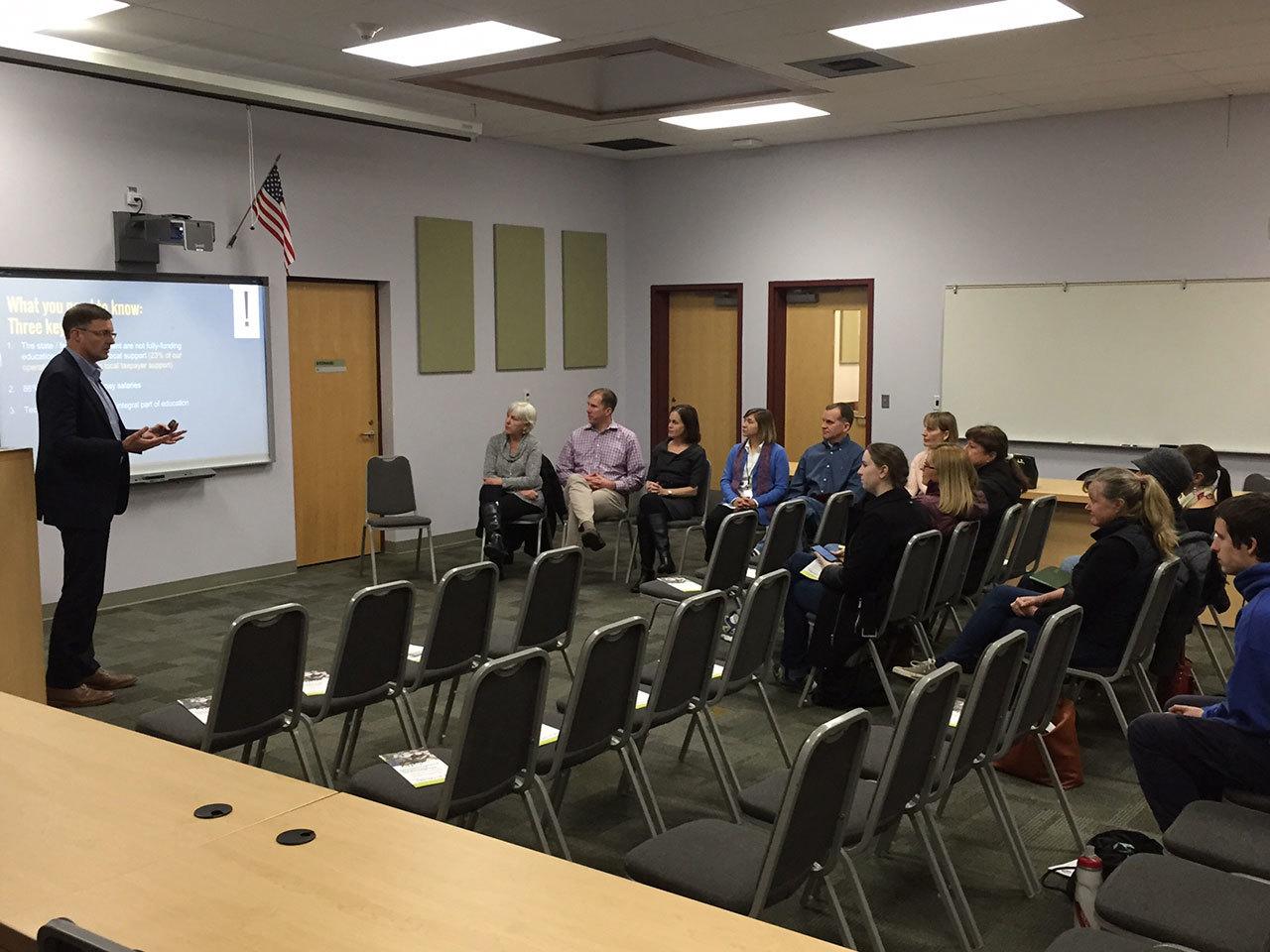With a few questions still lingering before next week’s big day at the ballot box, officials from the Bainbridge Island School District hosted a special question-and-answer session for island voters Tuesday.
District Superintendent Peter Bang-Knudsen led the discussion aided by a panel of school district officials. On the panel were Reese Ande, principal of Captain Johnston Blakely Elementary School; Kathleen Pool, a librarian at Blakely; Randi Ivancich, director of instructional technology; Mike Florian, principal of Woodward Middle School; and Peggy Paige, director of business services.
Bainbridge voters will give a thumbs up, or down, next Tuesday on two levies for local public schools. Proposition 1 will renew the district’s property tax levy for education programs and maintenance, with $10.4 million to be collected in 2018 rising to $11 million by 2021. Property owners would pay $1.50 per $1,000 of assessed property value, and the rate will rise to $1.54 by 2021.
Proposition 2 is an extension of the district’s technology levy which, if passed, will collect $2.2 million annually between 2018 and 2021. The tech levy will mean an assessment of 32 cents for every $1,000 of property value.
Bang-Knudsen outlined the district’s need for money by citing the lack of adequate funding for basic education coming from the state. The educational programs and operations levy — which goes toward things like teacher salaries, school programs, activities and transportation — was described by Bang-Knudsen as being “mission critical.”
While state funding will account for a portion of the district’s educational operations budget, the state does not allocate any funds to help schools purchase new or update existing technology. The technology levy, according to Florian, the principal of Woodward Middle School, is crucial to developing the ways students are learning.
“At Woodward we were able to implement a take-home device for every student,” Florian told the crowd.
“If you were to walk into one of our classrooms, this isn’t your parents’ classroom. It’s not what you saw even 10 years ago,” he said. “It’s tremendously active in terms of the technology that’s present.”
Florian noted that students can do research live with their Chromebooks to answer the inevitable questions that pop up during class. Technology in the classroom has also given teachers the ability to use these individual moments of curiosity to instruct their class as a whole.
“A student asks a question and they say, ‘Well, let’s find a solution to that,’ and they can go to their device and the teacher can pull it up on the Smart Board and they can discuss that,” Florian said.
“I’m seeing a lot of increased engagement,” he said.
Money from the technology levy also gives the district the ability to pay for STEM (science, technology, engineering and math) labs. Ande said these programs are getting kids involved in coding, mechanical engineering and science at an early age by offering fun and engaging activities to the students.
“We don’t just use technology for technology’s sake,” Ande said.
“It has to have purpose, it has to be engaging, it has to create an efficiency and if it doesn’t, then we probably shouldn’t be using it,” said the principal. “In STEM, kids are building, they’re creating, they’re programming. They’re doing a variety of things that gets them excited about learning.”
Later this year, Ande said Blakely Elementary will be holding its first-ever Maker’s Fair. The event will be an open house where students can showcase their cutting edge creations from the lab to parents and other students.
While most of the questions posed to the panel were about state funding and which monies were coming from where, and which fund could pay for what costs, there was one question that stood out from the others.
From the back of the board room came a young man’s voice, a student from Bainbridge High.
“Do you know about the computers here at BHS? How long ago were those put in?” the student inquired.
The question prompted a hearty chuckle from all in attendance.
The measures are the first return to voters from the district since the $81.2 million capital projects bond in February 2016.
The Special Election is Tuesday, Feb. 14. Ballots must be mailed or dropped off by 8 p.m.



